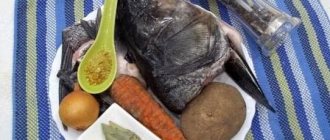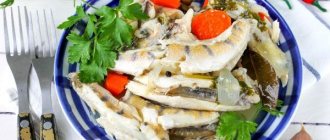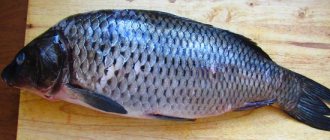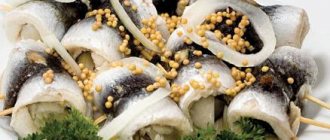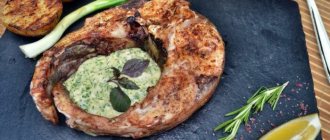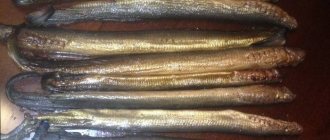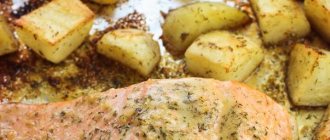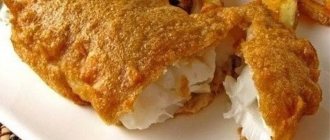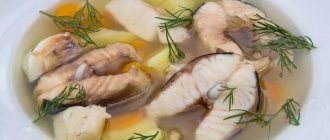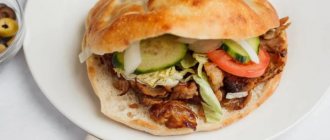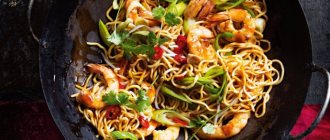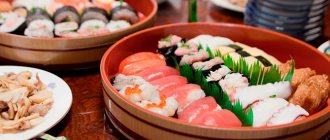How to cook nabe (鍋)?
Nabe is one of the most popular Japanese dishes; it is often eaten by characters in Japanese dramas: families, young couples, friends.
This dish is great to eat in cold weather and, despite the summer, it would be nice to try nabe with the whole family. In this article we will give you a simple recipe for nabe, the preparation of which takes at most 30-40 minutes and tell you a little about the traditions associated with nabe.
The word nabe (鍋) literally translates to "pot", and this name is quite justified, since nabe is cooked in a special pot that retains heat. Pots are generally made of clay or cast iron and are called 土鍋 (donabe) and 鉄鍋 (tetsunabe).
In many romance dramas, a young couple about to get married considers purchasing a large nabe pot an important step, as this purchase is the beginning of love and a strong family. There is also an expression 鍋を囲む (nabe-o kakumu) “to sit by the pot”, which refers to the warm familial/romantic/friendly relationship between people that occurs when eating nabe from a common pot.
There are a great many types of nabe, which differ in the area in which they prefer to cook them, and, accordingly, in the ingredients. Here are some examples: Ishikari-nabe (石狩鍋) – the main ingredient is salmon, a Hokkaido dish;
Kiritampo-nabe (きりたんぽ鍋) – main ingredients: kiritampo (fried rice on a stick) and chicken, a dish of the Tohoku region;
Ho:to:-nabe (ほうとう鍋) – the main ingredients: ho:to: (a type of udon) and miso broth, a dish of the Kanto region:.
Momiji-nabe (紅葉鍋) – prepared with venison, a dish from the Niigata region;
Harihari-nabe (はりはり鍋) - prepared with whale meat, a typical dish of the Kansai region;
Dote-nabe (土手鍋) - prepared with oysters, a dish of the Chugoku region;
Benkei no najiru (弁慶の菜汁) - soup with greens, duck, wild hog meat, chicken and pork, a dish of the Shikoku Islands;
Mizutaki (水炊き) is a chicken and Chinese cabbage soup from Kyushu.
Well, now let’s move on to the recipe itself, to prepare nabe you will need the following ingredients:
- 500 g chicken on the bones;
- 1 leek, but you can also use a simple leek;
- ½ daikon (Japanese radish);
— 1 package of ocher or asparagus (seasoning);
- ¼ Korean Hakusai cabbage, but you can use Chinese or regular cabbage;
- 1 nenkon root vegetable;
— 1 eggplant (to taste);
— 1 package of shiitake, maitake, enotaki mushrooms (shiitake are the most common);
- 1 package of fermented bamboo shoots (optional);
- 3 tbsp. spoons of ready-made curry mixture (or dry Dashi broth, or Miso paste);
— Ginger, garlic to taste
You should rinse the meat in cold water, place it in a pressure cooker and add two liters of cold water (if you don’t have a pressure cooker, then a saucepan will do). You need to bring to a boil, remove the foam and add chopped ginger and garlic, then close under pressure and simmer over medium heat for 30 - 40 minutes. Add the curry mixture to the prepared chicken broth, squeeze out half a lime, and throw in the other half with the peel for flavor, add nenkon, daikon, bamboo to taste and simmer over medium heat for 15 minutes. While the chicken soup is cooking, you can prepare the vegetables. They need to be washed and cut into large slices and placed in a clay or cast iron pan for nabe. Arrange the vegetables inside in piles and gradually pour in the prepared chicken broth with lightly boiled root vegetables. Cover with a lid, bring to a boil and simmer for another 5-10 minutes (time depends on the amount of food). You can serve with rice, noodles, funchose or boiled egg (this is up to your taste, you can do without it).
Source
How to make fried chicken udon
Chicken Run, chef Mark Statsenko
“Our udon comes from Thailand, white, plump noodles. We literally pour boiling water over her. A minute and she is ready for further work. Then you just need to lightly fry it in a wok.”
Difficulty: Easy
Type: Main course
Time: 30 minutes
Persons: 1
Ingredients
- udon noodles – 0.080
- peeled zucchini - 10 g
- bell pepper - 20 g
- red onion - 10 g
- chili pepper, cleaned — 2 g
- ginger root – 2 g
- fresh garlic - 5 g
- sesame oil - 2 g
- Teriyaki sauce - 1 tbsp. spoon
- boneless chicken legs - 1\2 pcs (thin strips)
- sesame – 2 g
- cilantro - 2 g
- vegetable oil - 2 g
- Kikoman soy sauce – 6 g
- Iceberg salad – 30 g
Japanese Nabe
Vegetables, meat, seafood and other various ingredients to taste are added to a specially prepared broth. The broth base is usually made from dried bonito tuna, seaweed and mushrooms with the addition of soy sauce, miso soy paste, sake, mirin, salt, etc., after which white Chinese cabbage, leeks and other vegetables are added to the pan, different types of Japanese mushrooms, tofu
, fish, shellfish, shrimp and other seafood, meat (beef, pork, chicken).
The result is a kind of Japanese hodgepodge, giving complete freedom to the flight of your culinary imagination. It is also an extremely popular family dish that the Japanese love to cook at home. After only a thick broth remains at the bottom of the pan, rice or udon or
ramen
noodles are added to taste,
and the resulting rich stew completes the meal.
For a company of 5-6 people you will need : Broth: 1 liter of water 3 heaping teaspoons of dry dashi broth 60 ml of soy sauce 80 ml of mirin (Japanese sweetish alcohol for cooking)
Seafood: fish, scallops, shrimp.
For speed: the broth in a Nabe pan can be heated directly on the fire, adding vegetables that will saturate the broth. Next, we transfer Nabe to a common table on a gas burner.
On the table: Everyone should have a large enough bowl where we will take out what we caught in Nabe, chopsticks, a small bowl for ponzu sauce, into which we can dip the ingredients before putting them in our mouths. It’s better to buy it, if you haven’t found it, you can make it yourself. Ponzu recipe (for a large quantity of sauce): 2 cups soy, 1 cup fresh orange juice, 4 tbsp lemon juice, 4 tbsp. spoons of water, 4 tbsp. spoons of mirin, teaspoon of red pepper. Mix everything. Small bowls of gohan (Japanese rice). We put additional vegetables for cooking, chopped fish and seafood in beautiful plates with Japanese ornaments. Kamaboko.
Rolls with crab meat
Rolls are a little more difficult to prepare. This requires some skill. In Japan they are called maki or makizushi (which means rolled sushi).
For 1 serving we will need:
- Rice seasoned with sauce (as for sushi) – 70 gr.
- Nori seaweed – half sheet
- Crab meat – 25 gr.
- Japanese mayonnaise – 7 gr.
- Cucumber – 5 gr.
- Avocado – 7 gr.
- Sesame – 2 gr.
- Flying fish caviar 30 gr.
- Mat for making rolls (makisu)
- Cling film
Prepare the rolls like this:
Wrap the makisu mat in cling film. Take a sheet of nori seaweed and place it on the makisu, rough side up. Place a ball of rice on top, prepared as for sushi (boiled and seasoned with sauce). We distribute the rice in an even layer from the center to the edges of the seaweed sheet so that the top rice does not reach the edge of the seaweed by 1 cm, and the bottom protrudes beyond the sheet by the same 1 cm. Having distributed the rice, we turn the sheet over so that the rice layer is at the bottom, and its lower edge deviated from the edge of the makisu by 1 cm.
In the middle of the sheet, along its entire length, squeeze out a strip of Japanese mayonnaise, on top of a strip of crab meat. Cut the cucumbers and avocados into thin strips and place them on the sides of the crab meat.
Now, using makisu, we form a roll, rolling everything into a tube. We get a dense tetrahedral “sausage” with a layer of rice on top, then a sheet of seaweed and filling inside. Without removing the roll from the cling film, place a layer of flying fish roe on top. We flatten it and once again give the roll its shape using makisu. We cut the roll crosswise into pieces with a sharp knife without removing the cling film. This way the makizushi will perfectly retain their shape.
We transfer them to a plate so as to show the beautiful center. Serve with wasabi, pickled ginger and soy sauce.
Hundreds of types of rolls have been invented. They are prepared by cleverly combining fish, vegetables, seafood and even fruits. Rolls with crab meat, eel and red caviar, with salmon, cheese and eel, with shrimp, with scallop, with avocado, strawberries and crab meat are very popular. Experiment, rolls are a great opportunity for culinary creativity!
Ceramics or metal?
Some types of nabe, such as mizutaki or fugu-nabe (in Western Japan, tettiri-nabe), are prepared primarily in ceramic pots. These pots are made of clay and covered with glaze. They are great for this type of cooking: the food takes longer to cook in them, but they also stay hot longer due to the fact that the ceramic retains heat better.
On the other hand, sometimes nabe is prepared in metal vessels. The metal has good thermal conductivity, which is important for proper preparation, for example, sukiyaki. And for shabu-shabu, a special metal container is used, designed like a samovar - with a hole in the center so that the water is heated evenly. Offal nabe (Japanese motsu-nabe) is prepared in a flat stainless steel pan.
How to cook nabe (鍋)?
Nabe is one of the most popular Japanese dishes; it is often eaten by characters in Japanese dramas: families, young couples, friends. This dish is great to eat in cold weather and, despite the summer, it would be nice to try nabe with the whole family.
In this article we will give you a simple recipe for nabe, the preparation of which takes at most 30-40 minutes and tell you a little about the traditions associated with nabe.
The word nabe (鍋) literally translates to "pot", and this name is quite justified, since nabe is cooked in a special pot that retains heat. Pots are generally made of clay or cast iron and are called 土鍋 (donabe) and 鉄鍋 (tetsunabe).
In many romance dramas, a young couple about to get married considers purchasing a large nabe pot an important step, as this purchase is the beginning of love and a strong family. There is also an expression 鍋を囲む (nabe-o kakumu) “to sit by the pot”, which refers to the warm familial/romantic/friendly relationship between people that occurs when eating nabe from a common pot.
There are a great many types of nabe, which differ in the area in which they prefer to cook them, and, accordingly, in the ingredients. Here are some examples: Ishikari-nabe (石狩鍋) – the main ingredient is salmon, a Hokkaido dish;
Kiritampo-nabe (きりたんぽ鍋) – main ingredients: kiritampo (fried rice on a stick) and chicken, a dish of the Tohoku region;
Ho:to:-nabe (ほうとう鍋) – the main ingredients: ho:to: (a type of udon) and miso broth, a dish of the Kanto region:.
Momiji-nabe (紅葉鍋) – prepared with venison, a dish from the Niigata region;
Harihari-nabe (はりはり鍋) - prepared with whale meat, a typical dish of the Kansai region;
Dote-nabe (土手鍋) - prepared with oysters, a dish of the Chugoku region;
Benkei no najiru (弁慶の菜汁) - soup with greens, duck, wild hog meat, chicken and pork, a dish of the Shikoku Islands;
Mizutaki (水炊き) is a chicken and Chinese cabbage soup from Kyushu.
Well, now let’s move on to the recipe itself, to prepare nabe you will need the following ingredients:
- 500 g chicken on the bones;
- 1 leek, but you can also use a simple leek;
- ½ daikon (Japanese radish);
— 1 package of ocher or asparagus (seasoning);
- ¼ Korean Hakusai cabbage, but you can use Chinese or regular cabbage;
- 1 nenkon root vegetable;
— 1 eggplant (to taste);
— 1 package of shiitake, maitake, enotaki mushrooms (shiitake are the most common);
- 1 package of fermented bamboo shoots (optional);
- 3 tbsp. spoons of ready-made curry mixture (or dry Dashi broth, or Miso paste);
— Ginger, garlic to taste
You should rinse the meat in cold water, place it in a pressure cooker and add two liters of cold water (if you don’t have a pressure cooker, then a saucepan will do). You need to bring to a boil, remove the foam and add chopped ginger and garlic, then close under pressure and simmer over medium heat for 30 - 40 minutes. Add the curry mixture to the prepared chicken broth, squeeze out half a lime, and throw in the other half with the peel for flavor, add nenkon, daikon, bamboo to taste and simmer over medium heat for 15 minutes. While the chicken soup is cooking, you can prepare the vegetables. They need to be washed and cut into large slices and placed in a clay or cast iron pan for nabe. Arrange the vegetables inside in piles and gradually pour in the prepared chicken broth with lightly boiled root vegetables. Cover with a lid, bring to a boil and simmer for another 5-10 minutes (time depends on the amount of food). You can serve with rice, noodles, funchose or boiled egg (this is up to your taste, you can do without it).
Another simple recipe for nabe
Nabe is ready, bon appetit!
Healthy miso udon soup with noodles and wakame
Hello, dear readers of the culinary blog susi-college!
Do you want a quick, tasty and healthy snack? A universal solution would be miso udon soup with noodles and wakame. This soup really cooks very quickly and is very tasty. Udon soup is one of the most common Japanese soups that you could try in restaurants or sushi bars. In Japan, this soup is served after the main course, for example, with fish or sushi. Friends, if you are interested in learning the history and meaning of Japanese soups, read an interesting educational article - Japanese soup.
It is also worth noting that miso soup is very easy to prepare. First of all, all the ingredients for this soup are easy to find and can be purchased in the East Asian section of stores. And secondly, the cooking process itself is not complicated, does not require special skill or knowledge, with the exception of the recipe, and does not require much time. For this, you always have the opportunity to have a quick and tasty snack, and besides, miso soup udon is very beneficial for your health!
Well, friends, let's make udon soup with noodles and wakame.
For 4 servings you will need:
- 4 cups dashi broth
- 3 tablespoons miso paste (white, red or mixed - your choice)
- 200 grams udon rice noodles
- Japanese sea vegetable - wakame, 20 cm (it can be replaced with good old nori, one sheet)
!!! Udon noodles are similar to pasta and can easily fit into a healthy diet plan. Tired of pasta??? Want to make your own udon noodles? Click here - Japanese udon noodles recipe!
!!! Wakame algae contains various minerals and nutrients. This sea vegetable is low in calories.
Stage one:
We start with preparation. Take the already cooked dashi broth, you will need 4 mugs. And ready-made miso paste, which you either prepared yourself or purchased at the store, you will need 3 tablespoons. If you don’t yet know how to prepare all this, then read the articles: “Will Miso paste work for you?” and “Dashi broth is the basis of the basics...”. Next, we need to soak the wakame in water for 10 minutes (Friends, if you use nori instead of wakame, you don’t need to soak them!!! Don’t be upset if you don’t have wakame, we ourselves use nori in making miso soup). Next, rinse and remove the wakame from the water (or take a sheet of nori), cut it into oblong pieces (strips). Boil 200 grams of udon noodles if you purchased them dry (you can also use boiled-frozen ones, then just defrost them). Preparations are complete!
Stage two:
Take hot dashi broth (if you have prepared the broth in advance, heat it up and bring it to a boil). Next, add wakame and 3 tablespoons of miso paste and mix thoroughly until it dissolves. Place the cooked noodles in bowls and pour in the udon soup and serve.
!!! It is important to never boil miso soup after adding miso paste to it, otherwise all the taste and beneficial qualities will be lost. That's why the Japanese always cook exactly as much as they can eat at one time.
Friends, you will also definitely like other Japanese soups, which are no less tasty than udon soup. For example, low-calorie miso soup at home or exotic instant mushroom miso soup. Well, for dessert, treat yourself to something very special... mmm... incredible Japanese mochi pastries with cocoa will be a great solution!
We wish you success in the kitchen and bon appetit!!!
And to quench your thirst - the first ever Coca-Cola advertisement! It’s funny how they made a video before...
https://youtube.com/watch?v=6Kl_1XForoY
Published in JAPANESE SOUPS
Taste palette of nabe - local gastronomic features
Almost every Japanese region has its own special local variety of nabe. For example, in Hokkaido it is ishikari-nabe with pieces of salmon, in Yamagata Prefecture it is imoni-nabe with taro tubers and beef, in Ibaraki Prefecture it is ankonabe, the main ingredient of which is deep-sea angler fish (Japanese anko). The sauces and seasonings with which nabemono is eaten are also different in different regions - in some places they prefer ponzu sauce, in others sesame sauce, and in other places they prefer to use yuzu-kosho paste or citrus juice-kabosu. Recently, supermarkets have begun to sell packages of nabe no moto - instant broths for nabe of various types.
Recipe for Korean nabe with beef. Calorie, chemical composition and nutritional value.
Nutritional value and chemical composition of "Korean nabe with beef."
The table shows the nutritional content (calories, proteins, fats, carbohydrates, vitamins and minerals) per 100 grams of edible portion.
| Nutrient | Quantity | Norm** | % of the norm in 100 g | % of the norm in 100 kcal | 100% normal |
| Calorie content | 63.6 kcal | 1684 kcal | 3.8% | 6% | 2648 g |
| Squirrels | 4.3 g | 76 g | 5.7% | 9% | 1767 |
| Fats | 3.8 g | 56 g | 6.8% | 10.7% | 1474 g |
| Carbohydrates | 3.7 g | 219 g | 1.7% | 2.7% | 5919 g |
| Alimentary fiber | 0.2 g | 20 g | 1% | 1.6% | 10000 g |
| Water | 83.8 g | 2273 g | 3.7% | 5.8% | 2712 g |
| Ash | 0.571 g | ||||
| Vitamins | |||||
| Vitamin A, RE | 25.5 mcg | 900 mcg | 2.8% | 4.4% | 3529 g |
| alpha carotene | 0.137 mcg | ||||
| Vitamin B1, thiamine | 0.09 mg | 1.5 mg | 6% | 9.4% | 1667 g |
| Vitamin B2, riboflavin | 0.076 mg | 1.8 mg | 4.2% | 6.6% | 2368 g |
| Vitamin B4, choline | 10.86 mg | 500 mg | 2.2% | 3.5% | 4604 g |
| Vitamin B5, pantothenic | 0.163 mg | 5 mg | 3.3% | 5.2% | 3067 g |
| Vitamin B6, pyridoxine | 0.11 mg | 2 mg | 5.5% | 8.6% | 1818 |
| Vitamin B9, folates | 15.114 mcg | 400 mcg | 3.8% | 6% | 2647 g |
| Vitamin B12, cobalamin | 0.395 mcg | 3 mcg | 13.2% | 20.8% | 759 g |
| Vitamin C, ascorbic acid | 10.8 mg | 90 mg | 12% | 18.9% | 833 g |
| Vitamin E, alpha tocopherol, TE | 0.217 mg | 15 mg | 1.4% | 2.2% | 6912 g |
| Vitamin H, biotin | 0.569 mcg | 50 mcg | 1.1% | 1.7% | 8787 g |
| Vitamin K, phylloquinone | 0.1 mcg | 120 mcg | 0.1% | 0.2% | 120000 g |
| Vitamin RR, NE | 1.8846 mg | 20 mg | 9.4% | 14.8% | 1061 g |
| Niacin | 0.753 mg | ||||
| Macronutrients | |||||
| Potassium, K | 126.83 mg | 2500 mg | 5.1% | 8% | 1971 |
| Calcium, Ca | 15.2 mg | 1000 mg | 1.5% | 2.4% | 6579 g |
| Magnesium, Mg | 8.95 mg | 400 mg | 2.2% | 3.5% | 4469 g |
| Sodium, Na | 231.03 mg | 1300 mg | 17.8% | 28% | 563 g |
| Sera, S | 35.44 mg | 1000 mg | 3.5% | 5.5% | 2822 g |
| Phosphorus, Ph | 42.1 mg | 800 mg | 5.3% | 8.3% | 1900 g |
| Chlorine, Cl | 9.61 mg | 2300 mg | 0.4% | 0.6% | 23933 g |
| Microelements | |||||
| Iron, Fe | 0.672 mg | 18 mg | 3.7% | 5.8% | 2679 g |
| Yod, I | 1.1 mcg | 150 mcg | 0.7% | 1.1% | 13636 g |
| Cobalt, Co | 1.065 mcg | 10 mcg | 10.7% | 16.8% | 939 g |
| Manganese, Mn | 0.0591 mg | 2 mg | 3% | 4.7% | 3384 g |
| Copper, Cu | 63.76 mcg | 1000 mcg | 6.4% | 10.1% | 1568 g |
| Molybdenum, Mo | 1.764 mcg | 70 mcg | 2.5% | 3.9% | 3968 g |
| Nickel, Ni | 1.308 mcg | ||||
| Selenium, Se | 0.239 mcg | 55 mcg | 0.4% | 0.6% | 23013 g |
| Fluorine, F | 55.21 mcg | 4000 mcg | 1.4% | 2.2% | 7245 g |
| Chromium, Cr | 1.25 mcg | 50 mcg | 2.5% | 3.9% | 4000 g |
| Zinc, Zn | 0.5965 mg | 12 mg | 5% | 7.9% | 2012 |
| Digestible carbohydrates | |||||
| Starch and dextrins | 0.023 g | ||||
| Mono- and disaccharides (sugars) | 2.3 g | max 100 g | |||
| Essential amino acids | |||||
| Arginine* | 0.209 g | ||||
| Sterols (sterols) | |||||
| Cholesterol | 12.17 mg | max 300 mg | |||
| beta sitosterol | 4.563 mg | ||||
| Saturated fatty acids | |||||
| Saturated fatty acids | 1.3 g | max 18.7 g | |||
| 14:0 Miristinovaya | 0.084 g | ||||
| Monounsaturated fatty acids | 1.595 g | min 16.8 g | 9.5% | 14.9% | |
| 14:1 Myristoleic | 0.038 g | ||||
| Polyunsaturated fatty acids | 0.604 g | from 11.2 to 20.6 g | 5.4% | 8.5% | |
| 18:2 Linolevaya | 0.547 g | ||||
| Omega-3 fatty acids | 0.1 g | from 0.9 to 3.7 g | 11.1% | 17.5% | |
| Omega-6 fatty acids | 0.1 g | from 4.7 to 16.8 g | 2.1% | 3.3% |
Meeting in a warm circle
In Japan, it is believed that sharing a meal from the same cauldron (the role of which in this case is played by a nabe pot) promotes communication between people, be they relatives, friends or work colleagues.
After all the food cooked in the pot has been eaten, you can add rice and an egg to the remaining broth, and then you will have zosui stew. Or you can put pre-cooked noodles in it. Usually after this pleasant “final chord” the meal ends.
We present to your attention a magnificent nine nabe: from traditional recipes to relatively new culinary developments.
Mizutaki
Nabe made from vegetables and chicken on the bone. This type of nabemono was originally prepared in Fukuoka Prefecture, located on the island of Kyushu, but is now known and loved throughout Japan. Due to the fact that the chicken is cooked for a very long time, the rich broth acquires a characteristic milky white color.
Mizutaki
Sukiyaki
Sukiyaki is made with thinly sliced beef, Chinese cabbage, scallions, shungiku (edible chrysanthemum leaves), tofu and starchy shirataki noodles. In Eastern Japan, sukiyaki is prepared a little differently than in Western Japan, but the fundamental principle is the same - the products are fried (or boiled) in a flat pan in a salty-sweet sauce made from soy sauce with the addition of sugar and mirin. Before eating foods prepared in this way, they are dipped in a bowl with a lightly beaten raw egg.
Sukiyaki
Tonyu-nabe (nabe made with soy milk)
This variety of nabe appeared relatively recently, in the wake of the popularity of soy milk. Soy milk (Japanese: tonyu) is added to the broth (Japanese dashi). The delicate taste of soy milk harmonizes perfectly with meat, seafood and vegetables. Those who like something hot and spicy can season their sukiyaki with spicy rai sesame oil or yuzu kosho paste.
Tonyu-nabe
Ishikari-nabe
Ishikari-nabe
Tasty and simple, warm and soulful
In the winter cold, it’s nice to gather the whole family or a good company around the nabe and enjoy a delicious warming meal, which will not be difficult for you to prepare!
First, a portable gas burner or electric stove is placed on the table. A nabe pot with water or broth based on kombu seaweed (kelp) is placed on it. When the liquid in the pot boils, you can add foods for every taste to the pot: meat, fish, tofu, seafood, mushrooms and vegetables. When ready, all this is removed one by one from the pot using chopsticks, placed in bowls and saucers and seasoned with a sauce of your choice: soy, sesame, ponzu or sauce based on miso paste. The recipe is simple, the food in the boiling broth does not cool down, and everyone can take what and how much they want. You can add food to the pot at almost any time. You choose what to make nabe from, based on preferences and the number of participants. Both adults and children enjoy cooking and eating nabe.
Mizutaki (left) and shabushabu (right)
Concentrated broth for the Japanese winter dish Nabe Puchitto Nabe, Ebara
Japanese home cooking in your kitchen! The play on words is good, but no less wonderful are the sauces for the instant broth of the equally instant dish of Japanese cuisine - nabe. Nabe translated into Japanese means “saucepan”; it is a winter dish and very, very easy to prepare, which is why Japanese housewives love it. For the nabe dish you will need meat (thinly sliced pork, or minced chicken meatballs, or even sausages) or fish (red or white) and vegetables, here we leave your imagination to you, the vegetables should be such that they cook quickly (mushrooms, shallots, Chinese cabbage) or thinly sliced (carrots, for example) and tofu is a must, I think it’s no longer a problem to find it in big cities or at the Korean market
If there is some broth left after eating, you can add boiled rice and get Japanese risotto. Or ramen or yakisoba noodles (Korean or Chinese, which are sold in your city already prepared) or kitlap noodles. I will offer a choice of the most popular flavors that you should like. :
Dote-nabe with oysters
A Hiroshima dish using local oysters. First, a “mound” (Japanese dote) of miso paste is formed around the perimeter of the pot, then broth is poured in which oysters, tofu and vegetables are boiled. As you eat, the miso “mound” gradually dissolves into the broth, giving it its characteristic flavor.
Dote-nabe with oysters
Shabu-shabu
Shabu-shabu is a word that can mean the gurgling of boiling water or the repeated movement of the hand (for example, when varnishing or painting a surface). This dish is prepared like this: thinly sliced beef or pork is dipped into boiling water for a few moments, making the above-mentioned movement with your hand. Then the meat cooked in this way is dipped in sauce (ponzu, sesame sauce or soy sauce with vinegar added) and eaten with pleasure.
Shabu-shabu
Yu-dofu
Apart from kombu dashi (kelp broth), this dish has only three ingredients: tofu, water and the sauce in which the tofu is dipped before eating - most often either soy sauce or ponzu. To season yu-dofu, you can use green onions, citrus yuzu, grated daikon (sometimes with the addition of red capsicum or carrots, the so-called koyo-oroshi) and bonito shavings (Japanese kezuri-bushi).
Yu-dofu
Motsu-nabe - offal stew
Motsu-nabe
Recipe for “Udon Soup with Oyster Mushrooms”:
Wash the oyster mushrooms and cut into small slices
Peel the ginger and cut into flat pieces. I’ll immediately make a reservation about ginger - sometimes I want the soup to be spicy and fiery, then I add more ginger, and sometimes I want everything to be in moderation - then 10 grams of ginger is enough and after frying I completely remove it from the pan. Wash the chicken fillet and cut into strips, chop the garlic finely. Fry all this in hot oil. The mushrooms should release juice, but the liquid will evaporate. It is necessary to fry until the mushrooms are slightly brown. The smell in the kitchen will be excellent!
While all the ingredients are simmering, boil the udon noodles according to the instructions on the package. I usually throw it in boiling, slightly salted water and cook for 7-8 minutes
Now we need to add bell pepper, cut into small cubes, to our chicken and mushrooms
And chili pepper. I also add this pepper either during the preparation of the dish, or at the very end, when everything is ready, so that it is not so spicy.
Add Kikkoman soy sauce. Mix everything and simmer for a couple of minutes. Always adjust according to your taste - salt, acidity, spiciness... after all, everyone's taste preferences are different.
Now it’s the turn of the chicken broth, I mixed the chicken cube with water and poured it into the pan. Now you need to add lemon juice, cook for 5-6 minutes and remove from heat. Add udon noodles, chopped green onions and you're done! Let's serve!
In fact, there are many options for preparing this dish, some add other spices, some add other ingredients. All this is very tasty, this is the recipe in my CC, it’s just for me, as they say - everything is as it should be!!! Bon appetit!
LiveInternetLiveInternet
In the summer, they repeatedly pushed me to tell me about nabemono or, in simple terms, nabe. And I answered: it’s not the season, they say, come in winter. Winter has finally arrived. If you don’t take into account the abnormal heat and lack of snow, then at least according to the calendar it’s definitely winter. And the winter food season has arrived too. Winter food refers primarily to hot and relatively higher calorie foods. Nabemono is just from this category. So I want to tell you today what nabemono is and with what and how it is prepared and eaten.
The word “nabemono” itself - 鍋物 - consists of two kanji: “nabe” - pan, and “mono” - things, a type of thing. That is, roughly speaking, nabemono is everything that can be put in a pan. Purely logically, you can put almost anything in a pan. So in nabemono or nabe (as they usually say, in a simple way) you can dump almost any food. This is “Irish stew” in Japanese. For nabemono, you will first need a nabe - a saucepan. It should be low, no higher than 10 cm, and a wide pan with a diameter of at least 20 cm (depending on the number of people who will sit around this pan) with a lid of a suitable size. A very deep frying pan will do. It is better to choose a thick-walled pot or frying pan for nabe so that it retains heat for a long time. Traditional Japanese nabe pots for such a meal are made of ceramic and look something like this:
Photo from Wikipedia. Well, or I already showed once ceramic nabe made in Shigaraki-Tanukimura: For this saucepan you absolutely need to have a compact portable stove, either electric, or gas, or some other kerosene stove. Simply because nabemono is made right on the dinner table and eaten directly from the pan. And running to the stove for every spoon is exhausting. Well, and personal utensils for each eater: a small deep bowl, spoon and chopsticks. In case of urgent need, chopsticks can be replaced with a fork, but the effect is not at all the same. This is from our homemade nabe kit, just as an example to show what it might look like. This is a nabe saucepan - for 1-2 people. For the “kitchen duty officer”—pouring, watching the pot”—you can also use an ordinary small ladle. The whole beauty of nabemono is in the collective diving into the pan. That is, a kerosene tile is placed in the middle of the table so that any participant in the dinner (this is usually the food for dinner) can easily reach the pan that is placed on this tile. Something like this:
The remaining nabe soup can be consumed as is, or you can cook soup porridge. That's about all I have to say at the moment. I repeat: there are countless options for nabemono. There are options where cow's or soy milk is used instead of water for soup. Some types of nabe are topped with a raw egg (like a “poached egg”). In short, there is scope for culinary experiments! Bon appetit!
Sushi (or sushi) is an indispensable attribute of any Japanese feast, both on weekdays and on holidays. In the classic version, it is a small dense piece of specially prepared rice, flavored with wasabi and wrapped in a thin fish petal.
Source
Udon noodles with tofu and vegetables
Category: Hot dishes Dishes from vegetables, mushrooms, legumes Hot dishes from vegetables
TOFU or bean curd is a protein-rich food product made from soybeans. Tofu has a neutral taste (that is, its own taste is almost absent), which is one of the advantages of tofu, and allows for universal use in cooking. Tofu is rich in high-quality vegetable protein (10.7% in firm tofu, 5.3% in soft tofu), which contains almost all the essential amino acids, and is also a source of iron and calcium. At the same time, tofu is a low-calorie product that does not contain cholesterol. According to the results of some studies: regular consumption of tofu in raw form protects the body from dioxin, which causes cancer, and promotes the active elimination of dioxin from the body tofu significantly reduces cholesterol in the blood tofu can be used to prevent osteoporosis tofu can alleviate the symptoms of menopause, reduce the risk development of heart diseases Source of information: Wikipedia.
